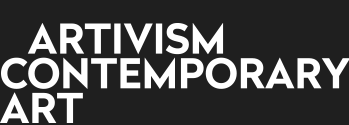3 / Amine Bouziane
Amine Bouziane, Director
Behind the scenes of the movement #3
SC : Amine tu es donc réalisateur, tu travail sur des documentaires TV. Tu as réalisé un documentaire très engagé sur les «Bimbos d’Egypte». Tu travailles actuellement sur un documentaire sur les métiers à risques. Tu commence maintenant un nouveau documentaire pour France Télévision sur l’Artivisme dans l’art contemporain. Peux tu me dire ce qui te plait dans le travail de ces artistes plasticiens qui créent une oeuvre très engagé socialement et humainement
AB : Ce qui m’intéresse c’est de partir d’un présupposé que l’art contemporain ne parle pas à tout le monde. Ca parait être élitiste, presque un art des élites et une personne d’extérieur n’a pas forcement les références, les codes pour pouvoir comprendre mais on se rend compte qu’en réalité avec de nombreux artistes, tel que Malachi Farrell, il n’y a pas besoin d’avoir tout cela on comprend rapidement car c’est une expérience sensorielle car le message est rapidement assimilable, c’est ça qui m’intéressait, on se rend compte que l’art contemporain s’est déconnecté de ce qu’il était à l’origines et les artistes de l’artivisme dans l’art contemporain reviennent à ce qui est originel dans l’art contemporain à savoir que ce sont les idées qui priment plus qu’une technique. On s’en est écarté, on ne sais pas vraiment pourquoi c’est ce que je découvrirais dans le documentaire. Est ce les institutions, le marché ou les deux ?
SC : Donc l’idée de ton documentaire c’est de partir en immersion avec les artistes et les suivre sur le terrain ?
AB : Ce qui m’intéresse c’est la parole des artistes, ce que je me suis rendu compte sur un autre documentaire sur le street art que j’ai réalisé, j’ai suivi des artistes et je suis allé voir comment fonctionnait le marché de l’art. J’ai découvert que dans le marché de l’art les gens n’ont pas grand chose à dire à part parler du marché, voilà, on apprend pas grand chose finalement.
SC : Donc pour toi c’est plutôt être dans les coulisses de la création ?
AB : Oui, comment ces artistes crées, pourquoi, qu’est ce qui les nourris, comment ça s’accorde à la société, à la réalité, c’est raconter tout cela et même sortir de l’atelier car pour pour la création n’est pas que dans l’atelier les suivre sur le terrain, sur les montages d’expositions, être avec eux et révéler les coulisses.
SC : Donc ce documentaire va moins concerner les chiffres ou les records de prix, mais plutôt la démarche et le discours d’artistes ?
AB : Pour reprendre ce cliché ou cette parodie qu’il y a dans l’art contemporain qui fait que c’est le prix de l’oeuvre qui crée de l’intérêt, là non, c’est partir de l’oeuvre et de la parole de l’artiste et ensuite remonter et non l’inverse.
SC : So Amine, you’re a director, you work on TV documentaries. You directed a very militant documentary about the « bimbos of Egypt ». You currently work on a documentary about hazardous jobs. You are now starting a new documentary for France télévision about Artivism in contemporary art. Can you tell me what you like about the work of these visual artists who create a very socially and humanly committed art.
AB : I like the fact that we start with a presupposition that contemporary art is not meant for everyone. That sounds elitist, almost an art for the elite. And someone exterior doesn’t always have the references, the codes to get it. But you realize that in fact, with a lot of artists like Malachi Farrel, you don’t need all that. You quickly understand because it is a sensory experience, because the message is quickly assimilated. That’s what I liked, you realize that contemporary art has been disconnected from what it used to be. And the artists of artivism in contemporary art are coming back to the basics in contemporary art, I mean that ideas prevail, more than any technique. We shifted away from that, nobody really knows why. That’s what I’ll discover in the documentary. Is it because of the establishment, the market, or both.
SC : So the concept of your documentary is to go on an immersion stay with the artists and follow them in the field.
AB : I’m interested in the words of the artists, I realized that during the shooting of another documentary about street art that I directed. I followed some artists and I went to see how the art market worked. I discovered that in the art market, people don’t have much to say beside talking about the market. You see, you don’t learn much after all.
SC : So to you, it’s more about being behind the scene of the creation process
AB : Yes, how do these artists create, why, what feeds them. How does that agree with society, reality, I like talking about all that. And even getting out of the studio because creation does not only happen in the studio.
SC : Following them in the field, when they put up an exhibition, being with them and showing what happens behind the scene. So this documentary will talk about the ideas and words of the artists more than it will figures or price records.
AB : To resume the cliché or parody of contemporary art which claims that the price of the artwork creates the interest here, it’s the contrary, we start with the artwork and the words of the artist and then we go back up.
Directed and produced : ViewOn
Original concept : Stéphane Chatry
Traduction : Marion Bouvet


